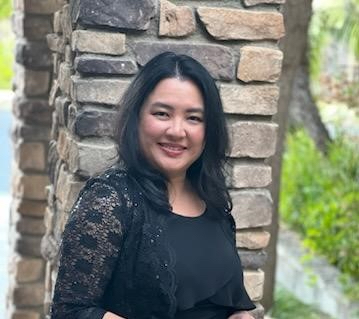“Gladiator II” Cinematographer John Mathieson on Capturing Robotic Rhinos & Colossal Carnage
If you’re in the mood for a visually stunning film with gladiators battling to the death in a flooded Colosseum and a very ripped Paul Mescal going head-to-head with a rhinoceros and a baboon, Ridley Scott’s pulse-pounding period actioner is the movie you’ve been waiting for. Twenty-three years after his first Oscar nomination for the original Gladiator, British cinematographer John Mathieson (Logan, Mary Queen of Scots) is back with the long-anticipated sequel, Paramount Pictures’ Gladiator II.
The events in the sequel are set 15 years after Russell Crowe’s Roman general, Maximus, was killed. Mescal’s Lucius lost his wife when the Roman army, led by General Acacius (Pedro Pascal), invaded his hometown of Numidia. An epic tale of destiny, revenge, love, and honor, the story follows Lucius’ quest to be free again, while he vows to avenge his wife’s death by killing Acacius. As the Machiavellian slave owner and businessman Macrinus (Denzel Washington) advises him early on: “Rage is your gift. Never let it go. It will carry you to greatness.”
We chat with Mathieson about framing this colossal sequel from the streets of Rome to the sands of the Colosseum.
With 24 years between the two films, what were some major differences in your process?
Honestly, not that much. You’ve still gotta capture real people in-camera with real, practical sets. I don’t think film language has really changed. Ridley wanted real physical stuff, so [production designer] Arthur Max built enormous sets. The actors loved it because they walked into Rome and the Colosseum, down the street into the Forum, the palaces, and temples. The scale was enormous! The Kingdom of Heaven set, which was re-used for this movie, was huge. It’s like old-style Hollywood films with real sets and a large number of extras. Some days, we had 50 horses on set. Not many people do this anymore, and I’m not sure who will again.
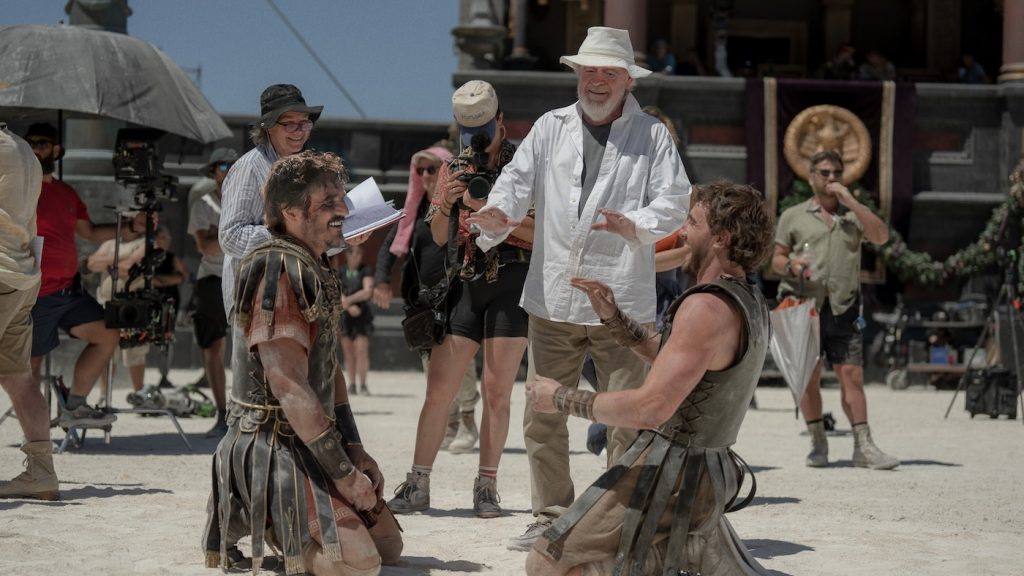
Can you compare shooting on film in Gladiator versus digital for this film?
When shooting on film, you spend a lot of time checking to see what the cameras actually captured. With digital, Ridley’s watching the 4K images on six monitors. So, he sees everything in real time. The speed of using zoom lenses with digital is great—we could get the whole sequence going with all the actors and extras, which takes a while to reset if you have to do close-ups. You don’t want to stop to change lenses in the middle of a big sequence like that. It’s more important to get the volume of shots when everyone’s there and the energy is up.
Several shots from Gladiator are included in this one to bridge the two films’ narratives. How were those handled?
We used several crowd scenes and flashbacks from Gladiator, which was shot on 235, not in a huge format. Even though we’re now in large format, the two cut together amazingly well. The images from Gladiator really held up well.
In the opening sequence, General Acacius leads the Roman navy’s invasion of Lucius’ hometown, Numidia. What was it like to film a water sequence in the desert of Morocco?
[Special effects supervisor] Neil [Corbould] brought in huge multi-wheel vehicles, the SPMTs [Self-propelled modular transporter], with jumbo jet wheels on which you can move ships and oil rigs. The boats were mounted onto them and steered in all directions and rammed into the city wall. That was all shot dry in the Sahara in June without a drop of water.
Did you use drones for some of the aerial shots?
We did a few with local drone crews. Drones are smaller format—when you’re so far away, large format doesn’t really matter. The drones can shoot 4k now. Onboard the ships, we had handheld cameras. Neil brought a lot of water with us so they could splash the decks as the artillery blasted in. As long as you’re underneath the digital water line, you could put the cameras wherever. Anything below it would be removed in post once the water was added digitally. It’s so much easier to shoot dry. When you shoot on water, even the slightest breeze will move a huge boat just enough to mess up the shot. By shooting it dry, we could get the ships to stop or move exactly where you want.
Were some of the close-ups filmed in real water?
Yes, they built a beach outside the Kingdom of Heaven set in the middle of the desert, for when Lucius falls off the edge and slams into the water. We built 200-300 feet of shoreline with water 4-5 feet deep. A wave machine pumps the waves in when he goes out to recover his wife’s body before the two centurions grab him.
When Lucius first fights in Rome, Macrinus notices him before adding him to his stable of gladiators. Where was that filmed?
That was a local, smaller arena in Morocco, at a World Heritage site, where Lucius fights the baboon. It’s the same spot where Proximo (Oliver Reed) first noticed Russell’s Maximus in the original when he was tied to Djimon Hounsou in that chain fight. There are a lot of similarities between the two films. In this one, they throw Lucius into the arena to fight these terrifying-looking, hairless baboons.
Lucius is forced to fight in the Colosseum arena against a rhinoceros! How was that shot?
We started wide with the crane sweeping in on the spectators. It’s similar to shooting a rock ‘n’ roll concert: you’re watching the spectacle unfold with everybody else. We went to close-ups when someone’s swinging at another guy or taking out the fighter on the rhino with an axe. Ridley wants to shoot it like a live concert. So, you capture everyone doing everything all at once. With these powerful zooms, we can get real action with real backgrounds all at once. When you do close-ups separately, you’ve gotta get the energy going again and put the background in. You may have to shoot close-ups for a sequence that had 50 horses when we shot the wides, but now you only have six. So, if you can get it all at the same time, it has the same level of energy.
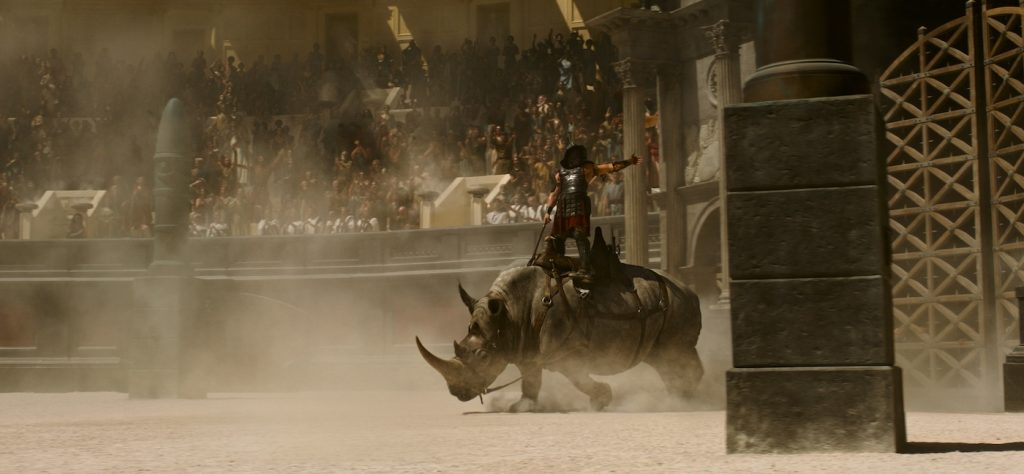
Was the rhino added in with CGI?
It was actually a robotic rhino, he was real down to his knees, his legs were added in later. He could do everything—his shoulders moved, he could blink, turn his ears around, stare at you, blow his lips, snort. There’s a guy with a remote control; it was fast and could turn on a dime. You didn’t want to be near it when it was going full speed. We captured so much that was real, with a real Colosseum, real background, and a real [robotic] Rhino. Blue screens would have been very expensive. Also, when you see what’s happening, you can be bolder with the camera, which makes it more exciting.
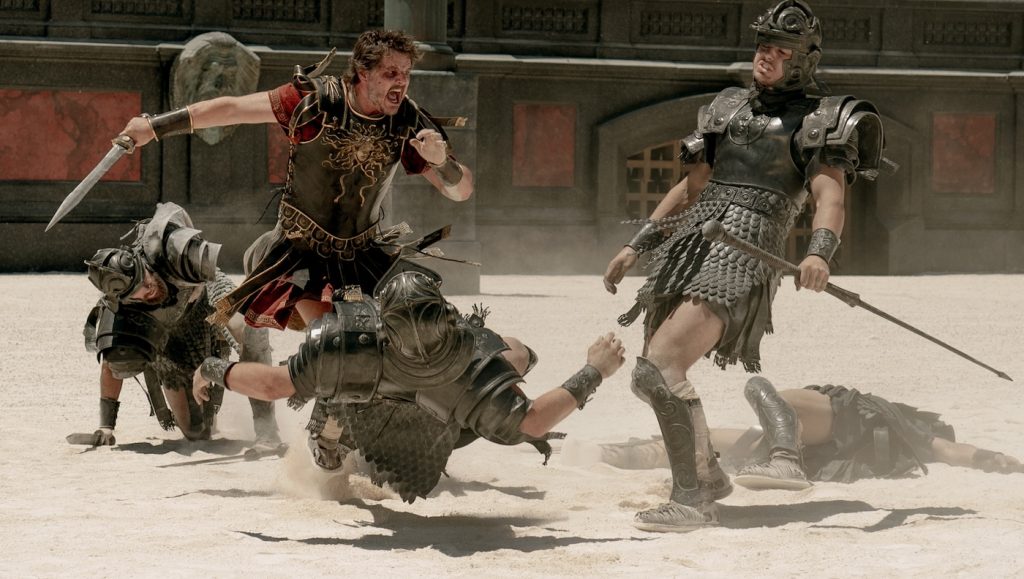
What were some of your favorite sequences?
I really love the mock naval battle in the arena. It’s beautiful, like a [Jean-Léon] Gérôme painting, and very romantic. He saw the Pyramids, the Acropolis, and the fall of the Roman Empire on the Grand Tour and brought all these paintings and architecture back. Lawrence Alma-Tadema also painted in that style. That sequence has all that decadence; it’s the Victorian spin on what happened in ancient Rome. The girls wearing beautiful, diaphanous linen dresses, people sitting around drinking wine, with peacocks around. They’re all having a fine time watching this disgusting slaughter. The opulence and excessiveness are great.
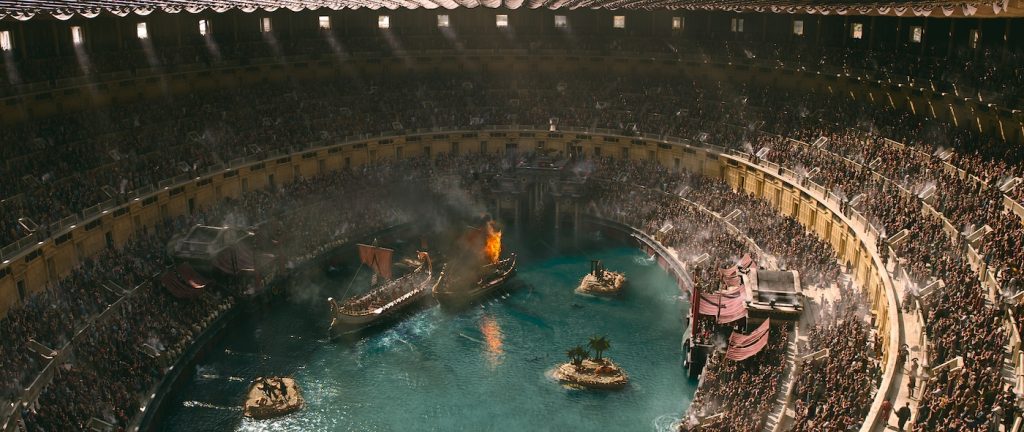
That was the entertainment of their day.
Right now, you’ve got boxing and MMA. I think it’s got a link back to this period of violence.
Which sequence(s) gave you the most headache?
I really don’t enjoy night shoots. When you have so many cameras at night, you need lights on the floor, which is difficult. There are a couple of night sequences when the rebellion starts at the end and some scenes between Connie (Lady Lucilla) and Pedro. The reenactment of the naval battle was difficult because we shot it dry with boats in Fort Ricasoli, then went into the water tank, where Arthur’s team built part of the Colosseum replica. You had to know what you did on the dry set and move all the action weeks later into the water set due to the strikes. It was logistically difficult, not so much for me but for the visual effects and special effects teams. It was our way of tipping our hat to those painters who imagined the scale of what went on in the Colosseum in their gorgeous artwork. There were people blowing trumpets, decadent people drinking wine and eating grapes. And in the middle of it all, sharks are eating the gladiators who fall into the water. I just think that was a fantastic sequence. I enjoyed watching it as an audience, and it’s nice to be part of it.
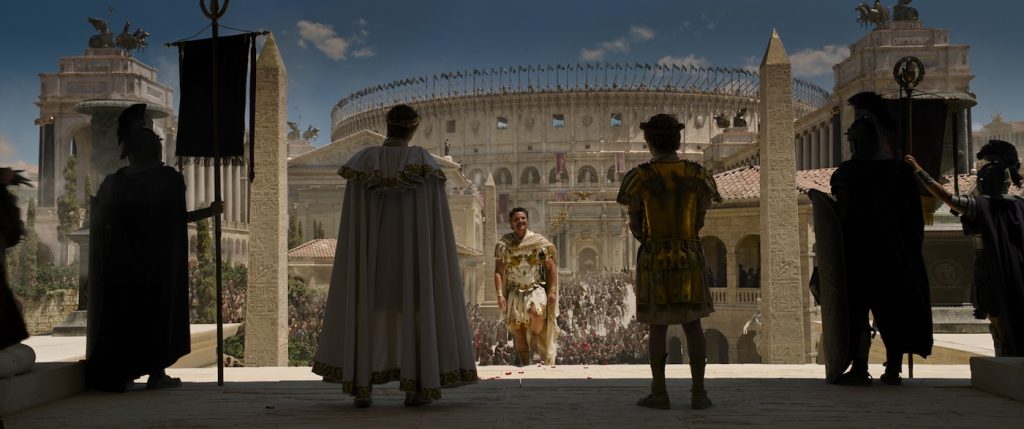
Gladiator II is in theaters nationwide.
For more on Gladiator II, check out these stories:
“Gladiator II” Screenwriter David Scarpa on the Herculean Task of Writing a Worthy Sequel
Maximus Effort: “Gladiator II” Production Designer Arthur Max’s on Creating Colossal Constructions
“Gladiator II” Production Designer Arthur Max on Rebuilding a Decadent, Debased Ancient Rome
Featured image: Paul Mescal plays Lucius in Gladiator II from Paramount Pictures.


